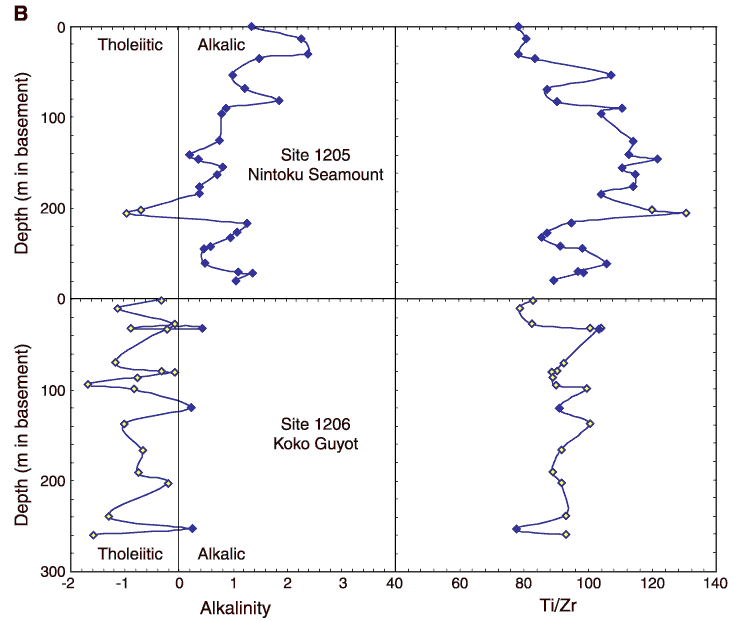
Figure F58. A. Ti/Zr and alkalinity vs. depth in basement for basalt from Detroit Seamount (Site 1203), Nintoku Seamount (Site 1205), and Koko Guyot (Site 1206). Alkalinity is a measure of the deviation from the tholeiitic-alkalic dividing line in Figure F59; positive values indicate alkalic basalt (solid symbols) and negative values indicate tholeiitic basalt (open symbols). At Detroit Seamount, dominantly alkalic basalt, some with an anomalously low Ti/Zr = ~60, are overlain by tholeiitic basalt with Ti/Zr = ~100, only slightly less than the primitive mantle estimate. This stratigraphic sequence of basalt types is not expected during the late shield and postshield growth stages of Hawaiian volcanoes (Clague and Dalrymple, 1987). B. At Nintoku Seamount the lavas are dominantly alkalic basalt with two flows of intercalated tholeiitic basalt at ~200 m in the basement. This sequence of basalt types is similar to that of the postshield stage at Mauna Kea Volcano (Frey et. al., 1990, 1991). In contrast, at Koko Guyot, the lavas are dominantly tholeiitic basalt with a few intercalated lavas of alkalic basalt. This sequence is similar to the late shield stage growth of Mauna Kea Volcano that were recovered by the Hawaiian Scientific Drilling Project (Rhodes, 1996; Yang et al., 1996).

